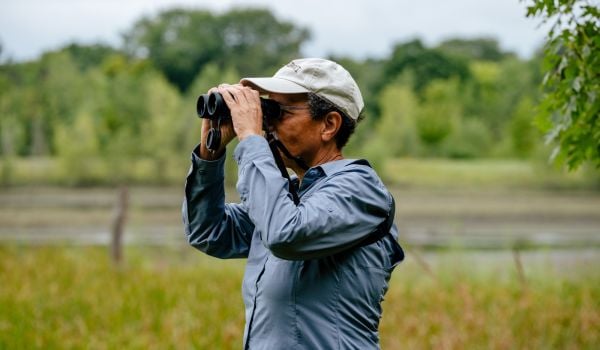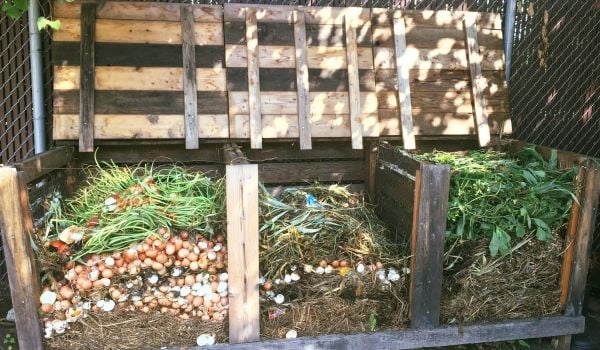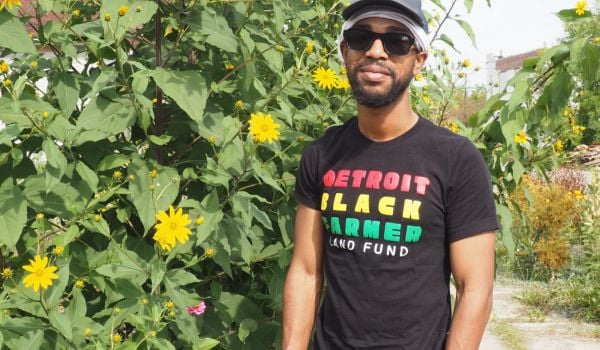This piece originally appeared on Grist.
Something is stirring in Detroit. Here, in a city that in the past decade alone lost a quarter of its already dwindling population, plans are in the works to revive the manufacturing economy — at least on a small scale. The Detroit FAB Lab taps into the vibe of “maker” labs and hackerspaces around the globe. Its creators envision an incubator for artists, artisans and entrepreneurs. Members will have access to equipment for woodworking, metalworking, digital fabrication and media, as well as business coaching and networking.
“Detroit has always been a place where things have been made,” says Alex Feldman, one of the project’s creators, who works on economic development strategies with the company U3 Ventures. “That tradition is still alive here. But it’s starting to shift in a small way to a more [artistic] culture of manufacturing and creation.”
The FAB Lab, a part of Wayne State University’s TechTown initiative, recently won a planning grant from ArtPlace America, a collaboration of charitable foundations, the National Endowment for the Arts (NEA) and federal agencies. The funding is designed not just to feed starving artists or prop up grand old arts institutions. Under the banner of “creative placemaking,” these grants aim to inject new life into local economies.
“Our idea is that we will invest in art and culture as part of a portfolio of strategies meant to transform communities,” says ArtPlace president Carol Coletta.
In September, ArtPlace announced $11.5 million in grants for the Detroit FAB Lab and 33 other projects designed to “integrate artists and arts organizations into key local efforts in transportation, housing, community development, job creation and more.” Two months prior, the NEA doled out $6.5 million in the first round of Our Town grants, funding 51 public-private partnerships that are also trying to both buoy up the arts and reshape communities.
But if the goal is to strengthen local economies, are these people wise to throw their money at artists? Wouldn’t foundations and government agencies be better off putting their money toward industries that create real jobs?
Luis Ubiñas, president of the Ford Foundation, which is a partner in ArtPlace, summed up the philosophy of creative placemaking on the NEA’s Art Works blog:
Art is not a luxury; art is a precondition to success in a world increasingly driven by creativity and innovation … Investing in arts and cultural institutions … can be the economic equivalent of bringing a manufacturing plant to a neighborhood and — from a cultural and quality-of-life standpoint — more than surpass it.
Kansas Gov. Sam Brownback would probably beg to differ. In May, Brownback vetoed the entire budget of the Kansas Arts Commission, saying that state needed to focus on “core” functions such as education and public safety. In response, the NEA has withheld all funding to the Kansas commission, arguing that the state needs to pony up its share if it wants a cut of the federal money.
This kind of culture-war skirmishing never fails to ignite a ruckus. But beneath it lie legitimate questions about the power of the arts to transform places, particularly in a time when public funders are struggling to cover the most basic needs.
“It’s unrealistic to think that artists are going to transform the entire economy of a city,” says Daniel D’Oca, an urban designer and co-founder of the New York-based architecture and planning firm Interboro Partners. “Artists can certainly bring value to a neighborhood and to a city. But, obviously, to address larger issues, there’s a lot more that you need to do.”
As an example, D’Oca offers up Baltimore, where he teaches at the Maryland Institute College of Art. Residents of Baltimore’s richest neighborhoods can expect to live 20 years longer than those in the poorest neighborhoods, according to a 2008 report from the city Health Department. D’Oca says there is a 40 percent discrepancy in high school graduation rates between the city and its wealthier suburbs.
If he had a million bucks to hand out however he pleased in Baltimore, would D’Oca — an art school professor who helped create a massive installation for the Museum of Modern Art’s PS1 courtyard this summer — give any to the arts? “No,” he says. “There are worse problems in inner cities.”
“I support the arts and arts funding as much as anyone,” says D’Oca. “But we shouldn’t assume that arts funding is economic development spending.”
Advocates of creative placemaking are careful not to present their work as a panacea. But they firmly believe that art has a central role in reviving urban economies and communities. As examples, Coletta offers the Design District in Miami; the ArtPrize festival in Grand Rapids, Mich.; WaterFire, which lights up the rivers in downtown Providence, R.I., with dozens of bonfires; and the Studio Museum in Harlem, which is credited with helping to fuel the resurgence there.
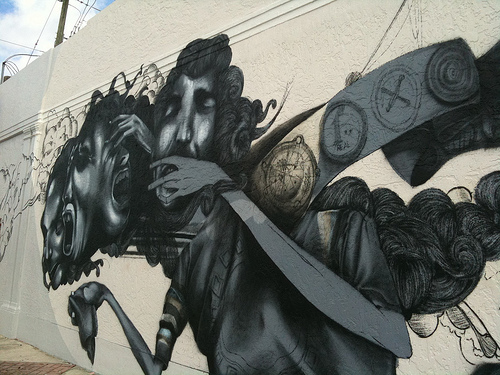
A mural in Miami’s Design District.
Credit: Ines Hegedus-Garcia on Flickr
It’s the SoHo story gone viral. But beyond anecdotal evidence, what kind of evidence is there that this kind of thing works? Nationally, arts and culture organizations generate $166.2 billion in economic activity every year, according to the nonprofit Americans for the Arts. But measuring the economic impact of the arts is a slippery business.
Coletta says her organization will be watching the recent grantees closely, in an effort to gauge something she calls “vibrancy.” What does that mean? ArtPlace will track the number and kinds of people that come to these communities, the types of jobs and activities there, and the value of real estate and other amenities over time.
“Vibrancy is probably the best proxy we have for the quality of place,” Coletta says. “Quality of place is essential for attracting and retaining human capital. And human capital is essential to the economic well-being of communities.”
There you have it: The arts recast as urban revitalization strategy.
Roberta Brandes Gratz, a longtime student of cities and author of The Battle For Gotham: New York in the Shadow of Robert Moses and Jane Jacobs, says it’s a refreshing approach. “Usually in the past, money went into creating big cultural venues — that’s not what nurtures the arts,” she says “These big venues are good for importing big productions, but for the arts to be of real economic value, it needs to be local.
“These grants reflect the true nature of urban arts,” Brandes Gratz says, “which is totally integrated into larger urban process.”
Grist special projects editor Greg Hanscom has been editor of the award-winning environmental magazine High Country News and the Baltimore-based city mag, Urbanite. He tweets about cities and the environment at @ghanscom.

Greg Hanscom is a senior editor at the non-profit news website Grist.org, where he writes about cities and climate change. He cut his teeth at High Country News, also a non-profit, and later edited the Baltimore city magazine Urbanite.

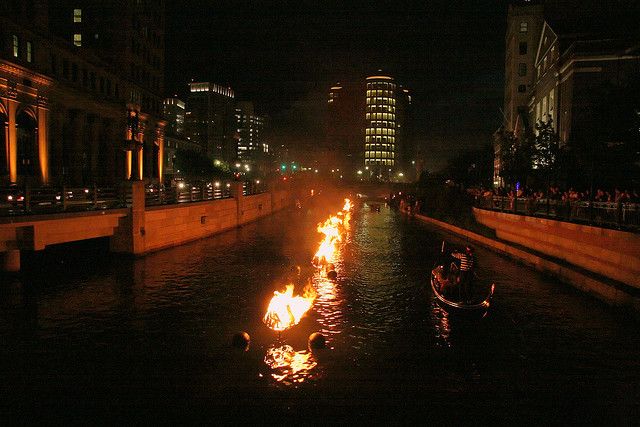


_600_350_80_s_c1.JPEG)

